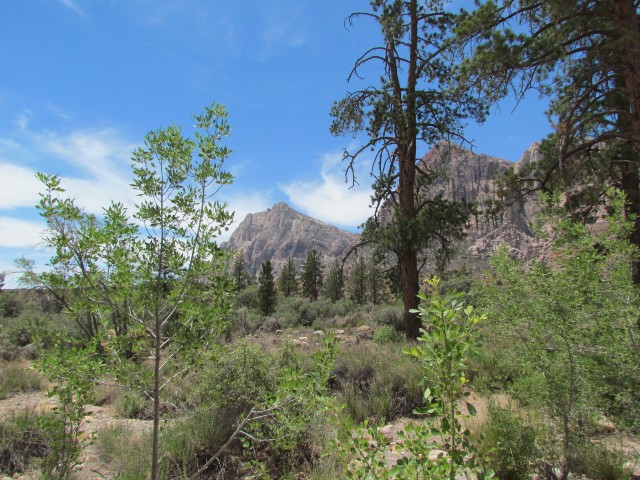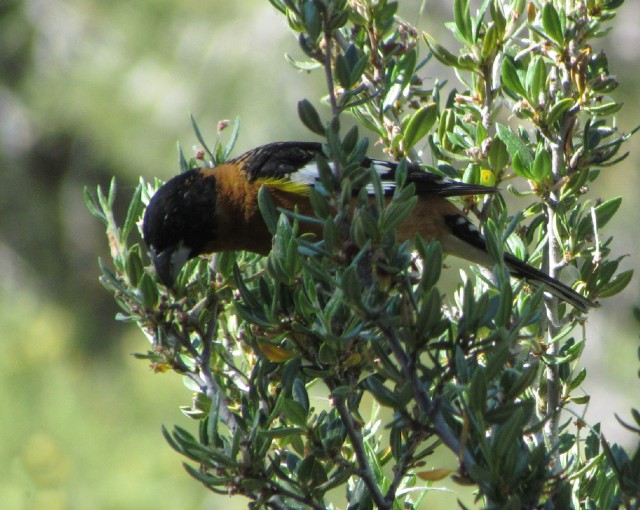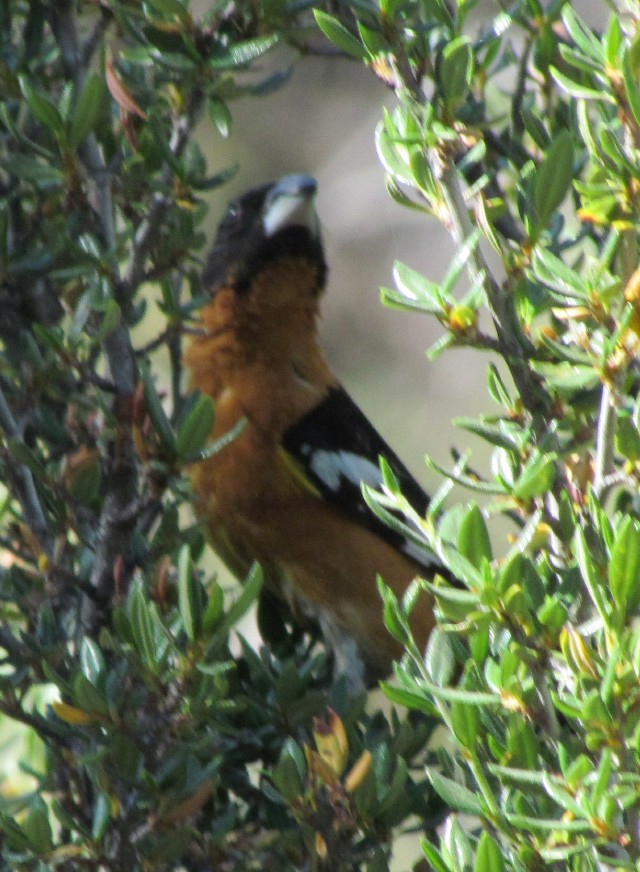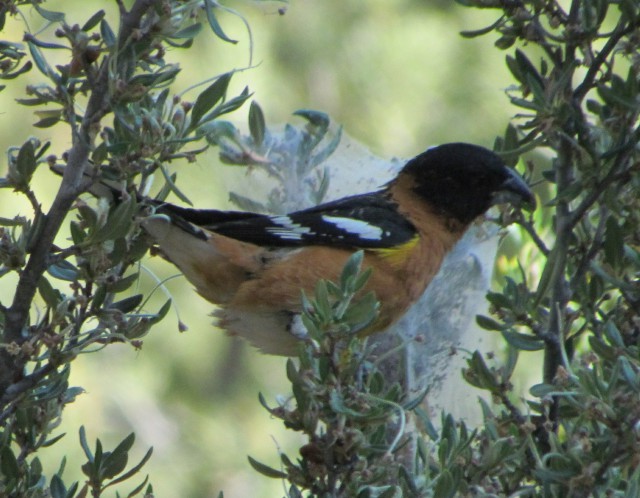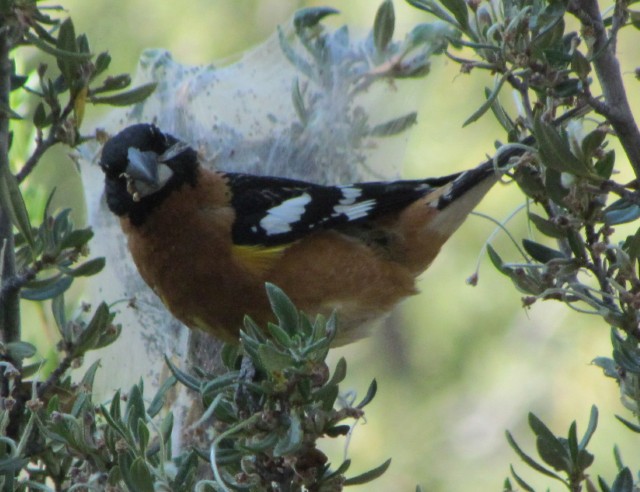While hiking on Mount Charleston, Nevada (near Las Vegas), I spotted a bird which I have never seen before. In western North America the sweet song of the Black-headed Grosbeak caroling down from the treetops sounds like a tipsy American Robin welcoming Spring. The flashy black, white, and cinnamon males and the less flamboyant females sing from perches in desert thickets, mountain forests, and suburbs.
This bird eats pine and other seeds, berries, insects, spiders and fruit. During the Summer, it mostly eats spiders and insects, switching to seeds and berries in the Fall and Winter. At feeders they effortlessly shuck sunflower seeds with their heavy bills.
The Black-headed Grosbeak is one of the few birds, along with the Black-backed Oriole, that can safely eat the poisonous Monarch Butterfly. This species consumes many Monarchs, perhaps over one million per year in the overwintering colonies in Mexico. They eat them in roughly 8-day cycles, apparently to give themselves time to eliminate the butterfly’s toxins.
This bird prefers to live in deciduous and mixed wooded areas. It likes to be in areas with large trees and thick bushes, such as patches of broadleaved trees and shrubs within conifer forests, including streamside corridors, river bottoms and suburban areas.
The Black-headed Grosbeak’s scientific name is well-suited. Its species name, melanocephalus, means “black-headed.” And its genus name, Pheucticus, refers either to the Greek pheuticus for “shy” or phycticus meaning “painted with cosmetics,” fitting for a showy bird that forages in dense foliage.

